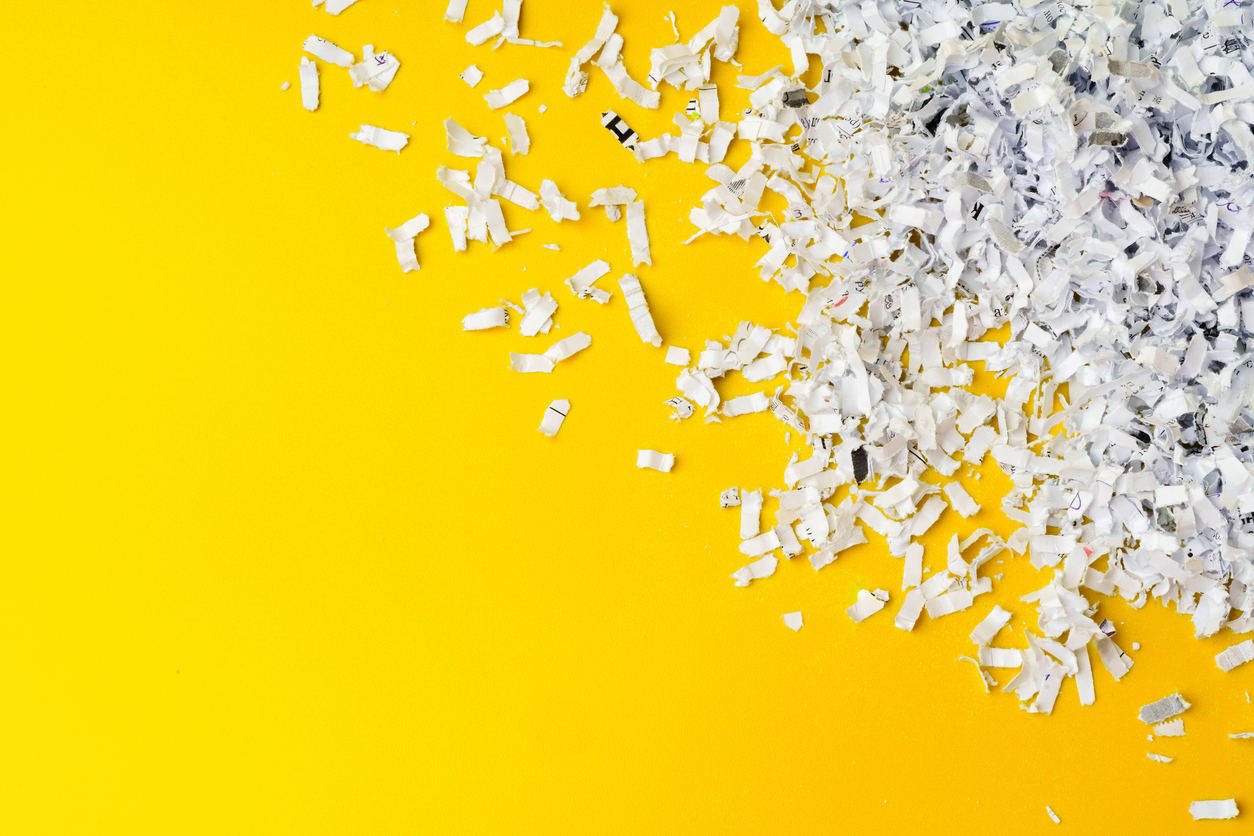In today’s digital age, protecting sensitive information is more critical than ever—but paper documents still pose a security risk. If your small business handles client details, financial records, confidential documents, or employee data, improper disposal can lead to identity theft, legal trouble, and reputational damage.
The solution? A solid paper shredding strategy. Follow these eight best practices to keep your business secure, compliant, and efficient.
1. Know What Needs Shredding
Not every document deserves the shredder, but many do. A good rule of thumb: If it contains personal, financial, or proprietary information, destroy it. Common examples include old bank statements, customer invoices, employee records, personal documents, expired contracts, outdated tax documents, and so on.
When in doubt, shred file folders and their contents. It’s better to be safe than sorry.
2. Choose the Right Shredder
Not all shredders are created equal. For small businesses, consider these factors:
- Security level: Look for a cross-cut or micro-cut shredder for your business. Why? The shredded material they produce is harder to reconstruct than strip-cut models - this allows for better security.
- Capacity: If you shred paper files frequently, opt for a heavy-duty machine that won’t overheat and is capable of handling large loads of documents and files.
- Bin size: A larger bin means fewer interruptions to empty it.
A high-quality shredder is an investment—don’t skimp on security level, capacity, and size of its bin.
3. Shred Regularly (Do not Let Paper or Unshredded Files and Documents Pile Up)
Keep in mind the following: a 'shred for later' pile is a security hazard. The longer sensitive documents sit around, the higher the risk of them being stolen or them being accidentally misplaced.
Instead, it's best for you and your team to schedule and follow through all of your weekly file shredding sessions, encourage employees to shred as they go, use a locked bin for documents awaiting shredding, and so on.
Remember: consistency is key. Make shredding part of your routine.
4. Partner With a Professional Shredding Service
For high-volume shredding or highly sensitive documents, outsourcing the job to a document destruction services provider is a smart move.
Experts secure shredding services offer the following to their clients like yourself: bulk shredding of physical documents which helps you and your team save time and other valuable resources, a legal proof of successful document shredding in the form of a certificate of destruction, along with on-site or off-site options.
If handling shredding in-house isn’t practical, working with professional document shredding service providers is a secure alternative.
5. Train Your Team on Paper Shredding Policies
Your employees play a crucial role in document security - don't let them out of the security equation.
Carrying out a quick training session can prevent costly mistakes. Ensure everyone in your team knows the following protocols and rules concerning: what to shred (and what to keep), how to use the paper shredder properly, why shredding matters (share real-world data breach stories for impact), and so on.
Remember to welcome feedback and encourage breakout sessions during training meetings with your whole team to encourage collaboration and ownership of their actions.
6. Securely Store Documents Before Shredding
Waiting to shred different documents? Don’t leave papers in an open bin. Use a locked shredding bin with a slot, a secure cabinet for sensitive files, as well as designated 'to-shred' area away from prying eyes for secure destruction of files. This extra layer of protection minimizes unauthorized access.
7. Destroy Digital Media as well
Paper isn’t the only threat—old hard drives, USBs, and CDs also store sensitive data. To effectively deal with that, do the following: use a shredder that handles digital media as well, perform degaussing (for hard drives and other storage devices to effectively delete files permanently), avail of professional e-waste destruction services for your company and its digital assets, and so much more.
Remember to never overlook digital risks when securing your business.
8. Stay Compliant with the Different Data Protection Laws in Your Sector and/or Region
Depending on your industry and where your company is located and doing operations, legal requirements may dictate how you should lawfully dispose of records.
Remember to research regulations that apply to you, keep records of your shredding process in case of surprise audits, update internal policies as laws change to reflect new requirements, and many more.
Compliance isn’t optional—it’s a must.
Final Words
Paper shredding isn’t just about tidiness—it’s a critical security measure. By following the abovementioned best practices, you’ll protect your business, clients, and reputation from avoidable risks.
Start today: audit your current process, fill any gaps, and make shredding a seamless part of operations. A little effort now prevents big headaches later.









